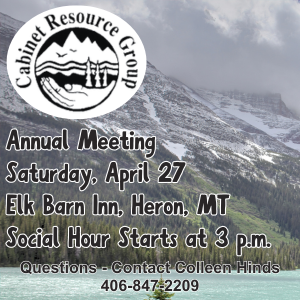Ranching a family tradition
25th anniversary for bison ranch
August 11, 2022

Ed Moreth
PENNED UP – Lenny Page looks over a group of bulls that he has temporarily separated from the rest of the herd at his ranch in Hot Springs.
The Page Bison Ranch has hit two milestones this year. It's the ranch's 25th anniversary and it's the first time it's had more than 200 head of bison.
It's sometimes a tough job - mending fences is a continuous task - but Lenny Page has no plans to quit what his father, Douglas Page, started in 1997. Lenny took over the 650-acre ranch some six miles north of Hot Springs eight years ago and he still loves doing it.
"Sometimes I ask myself why I do this because it's such a headache, but they are really a neat animal and the meat is awful good," said the 46-year-old Page, who also prefers raising bison over beef because they're a sturdier animal and he doesn't have to babysit them like he would if it was a beef cattle ranch. "I don't want to have to be here all the time. With cattle I'd be tied down to the place too much," said Page, who lives at the site where his grandparents had a homestead home in 1910.
Page presently has around 210 bison, including about 40 calves so far this year. Bison calves are also sturdier and rarely require human assistance. He usually loses one or two calves each year, but hasn't lost any this year. Page said he can leave his ranch for days, leaving the bison unattended, something he couldn't do with beef cattle. He had only between 50 to 60 when he took over the ranch in 2014, but this year it went over 200.
The Page Bison Ranch is one of eight bison ranches in Sanders County, including three in Hot Springs, two in Camas Prairie, one in Lonepine, one in Thompson Falls and one in Dixon. Page's father started with four bison that he got in Washington, but now Page believes his is probably the largest bison ranch in the county. His herd presently ranges from newborn calves to 6-year-old bulls. He doesn't usually keep them much older because he said they tend to get ornery. He has given only one a name "Old Crooked Horn" because of the odd shape of the cow's horns.
The time he spends with the herd depends on the time of year and ranges from daily to every three or four days a week. In April, he gets the entire herd into the pens in order to tag the 2-year-olds, a job that takes a handful of helpers. He's with them daily during the winter months because he has to feed them every day. It's also in the winter that he allows people to shoot bison, though he allows only the taking of bulls. Each year, he takes the buyers to the herd and lets them pick a bison with a specific color-coded ear tag. The cost depends on the bison's size and age, which normally runs between $1,500 and $2,000. They get the entire bison and he helps get the carcass into the customer's vehicle. Page reduces the herd by about 30 each year, including around a dozen bulls that are shot. Some are butchered to sell the meat to locals and tourists traveling along Highway 28. Page makes most of the meat into burger, the biggest demand, but also does sirloin, ribeye, New York steak and jerky. In his shop, he has hides and horns for sale, along with a handful of cleaned bison skulls, some donned with artwork by the celebrated artist Marla Brown, a former Hot Springs resident. This is the first year that he has put signs out along the highway to sell the meat. He's open only on Sundays or by appointment.
Despite Page's inclination for bison, there are drawbacks to raising American buffalo. "They're less maintenance, but the few times I've had to deal with them it gets pretty intense," said Page. They are a bigger and more powerful animal and require heavier electrical fencing, and even that seldom stops a charging 2,000-pound bull. Page puts three or four strands of electric wiring in his fence, but just last week a few ran into the fence and a bull took a portion of it with him when he ran back across the pen. Three years ago, nearly 50 buffalos flattened about 70 feet of fence. At first, he couldn't figure out why they stampeded, but he later found out that a mountain lion had been seen in the area and figured that might have done it. "It was very disheartening after two days of sorting them out," he said.
He said he also has to be careful when around bison. "They're a domesticated animal, but they're a wild animal. You have to watch them. I never turn my back on them," said Page, who's been chased by bison while checking on the herd on his four-wheeler. He had a cow charge him last year from 15-20 yards away while he was shooting video of her, but he never stopped filming, even when he had to jump into the pickup bed to avoid being rammed.
He's been around the bison for a long time and as a kid helped his father on the ranch, as his 16-year-old son Jody helps him. Over the years he's learned to read the bison warning signs, like the grunts, the foot stomp and the tail going straight up. He sometimes gets very close, but it's from a vehicle or when he's putting out hay bales with a tractor. They usually gather around the bales before he even drops the bales down. Last year while cutting a string atop a hay bale, he decided to kneel down and pet one on the head. "It was just a spur of the moment that as long as I'm right here I'm going to reach out and touch someone, which was a bull bison," said Page.
Mending fences is a constant task. Deer and elk sometimes knock out portions of fencing and when it happens it doesn't take long for some of the older bulls to figure out there's an opening. "They're just like grumpy old men and sometimes grumpy old men want to get away," said Page. But getting them back onto his property is the tougher part.

Ed Moreth
HERD CHECK – Lenny Page drives around to check on the bison herd, which is spread out on different parts of his property.
Bison are hardier than beef, but aren't as governable, which can be hazardous. Unlike beef cattle, where a rancher can move about the herd with no problem, bison are unpredictable. "They can appear docile, but you don't want to let your guard down around them," said Page. Bison can even be rough on each other, especially during the rut, when rival bulls battle each other for dominance in the herd. And even at other times of the year, bulls can pester cows, even those with calves, to the point of injuring the cow, said Page, who this year separated five 6-year-old bulls and six 3-year-old bulls from the herd and confined them in a separate pen, where they'll stay until mid-August.
There's a lot more to raising bison than just feeding and fencing. "You pretty much have to be a jack-of-all-trades. You're a rancher, but you have to be a bit of a veterinarian, a plumber, a mechanic and a carpenter," said Page. "You just learn that stuff over the years. But I get to be my own boss and I eat well."






Reader Comments(0)